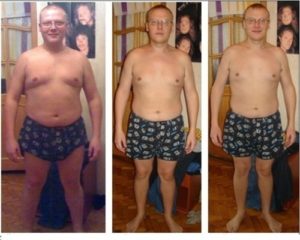Content
- 1 Features of 36-hour dry fasting
- 2 Why dry fasting is beneficial
- 3 What diseases does dry fasting treat?
- 4 Does dry fasting help you lose weight?
- 5 Dry fasting stages
- 6 Types of dry fasting
- 7 Possible problems and difficulties
- 8 The harm of dry fasting and contraindications
- 9 Conclusion
- 10 Reviews and results of losing weight
Among the various ways to lose weight, the most unique one can rightfully be called anhydrous fasting. And although he has many of his adherents, among medical workers, the benefits and harms of dry fasting raises many questions. Nevertheless, the useful properties of the method are worth exploring in more detail.
Features of 36-hour dry fasting

Dry, or absolute fasting, is a procedure in which there is complete abstinence from the intake of any food or liquid. The lack of nutrients and water creates extreme conditions for the body, as a result of which it begins to activate internal reserves and draw useful compounds from tissues and fat deposits. This contributes to its effective discharge and cleansing of harmful toxins and waste products, resulting in improved overall health and reduced body weight.
The terms of such an anhydrous diet vary widely from 1 day up to 3 or even 5 days. However, prolonged dry fasting from 48 hours or more threatens not only health, but also life. The optimal time is considered to be a 36-hour procedure, but it can only be practiced by people who have already experienced hunger with water.
Many proponents of alternative therapies point to the benefits of dry 36-hour fasting not only for weight loss, but also in the treatment of a number of different diseases. However, most members of the medical community do not approve of this technique due to the fact that it can lead to serious harm to health and life if the rules for its implementation are not strictly followed.
Why dry fasting is beneficial
Nevertheless, dry fasting does not lose its popularity due to the whole list of beneficial properties. As mentioned above, finding itself in conditions of hunger stress, the body begins to look for alternative ways to obtain energy, first of all extracting nutrients and water from the tissues and organs least important for life. This leads to the purification of the body from harmful compounds and the mobilization of all systems of the human body, including immunity. The lack of food, and hence a potential nutrient medium, dramatically slows down the reproduction of harmful microorganisms and viruses, which accelerates the process of tissue regeneration and the foci of inflammation disappear.
Dry fasting helps to get rid of various edema, which are formed due to the accumulation of fluid in damaged tissues. A short-term water deficit leads to the fact that puffiness of various natures dissolve, since the body uses any fluid available to it to maintain life.
But the health benefits of dry fasting don't end there. Along with the antibacterial effect, the method also has anti-aging properties, the benefits of which will be primarily appreciated by women. The lack of nutrients from the outside is detrimental not only for harmful bacteria, but also for diseased and damaged cells.In the course of the struggle for resources, the body destroys old cells so that healthy ones continue to function, in connection with which there is a general rejuvenation of tissues.
In addition, the beneficial properties of dry fasting have a cosmetic effect. Since an anhydrous diet destroys the source of inflammation, it successfully treats boils, pimples and irritations, improving the condition of the skin, which becomes smoother and softer, while the face contour is tightened.
Dry fasting has proven beneficial for men as well. Its properties are well-proven for such ailments as prostatitis and prostate adenoma. The cause of these diseases lies in the stagnation of the juices of the prostate gland, and a short-term deprivation of the body's access to water leads to a decrease in the amount of reserves of these fluids. The result is a significant reduction in inflammation and pain.
What diseases does dry fasting treat?
Proponents of dry fasting note its healing properties in the fight against numerous diseases, such as:
- urticaria, psoriasis, eczema;
- bronchial asthma, tuberculosis, pneumonia and other diseases of an inflammatory nature;
- arthritis, rheumatism, osteochondrosis;
- obesity;
- neurosis, insomnia;
- ovarian cyst, benign tumors.
Dry fasting also normalizes blood sugar levels and lowers bad cholesterol levels, preventing the formation of plaque in blood vessels, which can be beneficial for hypertensive patients. In addition, there is a theory about the potential benefits of anhydrous diet for various cancers.
Does dry fasting help you lose weight?
Dry fasting has proven beneficial for weight loss. The lack of nutrients and water from the outside forces the body to break down accumulated fats with triple activity, which in the process break down into glycogen and water. The destruction of adipose tissue at an accelerated rate allows you to notice significant visual changes at the end of the procedure. With the right approach, you can lose up to 5 kg in 36 hours of anhydrous diet.
But you should not chase the desired result to your detriment. A one-day dry fast, which is best for beginners, can also be beneficial and can save 1.5 to 2 kg along the way.
Dry fasting stages

With all the unique properties of dry fasting, its benefits can be turned into harm if you do not follow the necessary recommendations. Regardless of the type and duration, any hunger, carried out competently, should include 3 consecutive stages:
- preparation;
- directly abstaining from food and water;
- exit.
To achieve maximum benefit, it is important to strictly adhere to the rules on which each stage is built.
Training
In order for the process of dry fasting to pass without harm to the body, it is necessary to smoothly prepare it for the upcoming changes in conditions. For this:
- 14 days before the start of the procedure, it is worth replacing fat and fried foods with steamed or oven baked dishes.
- For 7 days, meat, alcoholic beverages, canned foods and sweets are gradually excluded from the menu, giving preference to protein foods: poultry, fish, cereals, dairy products.
- The consumption of salt, sugar and coffee is reduced to a minimum.
- 3-4 days before dry fasting, they switch to food of plant origin: bran, fruits, vegetables, nuts and mushrooms. Water is consumed in an amount of 2 - 2.5 liters.
- Immediately on the eve of the procedure, they eat only fruits and vegetables in their unprocessed form, drink water and freshly squeezed juices. The last meal must be no later than 18:00.
Dry fasting process
Despite the obvious benefits of dry fasting for the body, this procedure is quite difficult for inexperienced people. It is possible to facilitate the course of a hunger strike, while eliminating harmful consequences, if:
- Spend more time outdoors... The spring and summer months are considered ideal for practicing an anhydrous diet. The abundance of sunlight and oxygen activates the production of the hormone of joy, which not only gives a good mood, but also suppresses hunger.
- Plan your day... When every hour is filled with meetings and thoughts are busy with pressing issues, there is no time to be distracted by hunger. Plus, a sudden change in eating habits will not bother friends and family as much.
- Keep calm... Since dry fasting is a strong physical stress, it is worth protecting yourself from psychological stress if possible for this period. In order to cope with nervous overload, the body needs energy, which is very limited in conditions of dry fasting. Therefore, during this period, it is worth surrounding yourself with easy worries and observing a rest and sleep regimen.
- Do not overwork... You should refrain from intense physical exercise, as during dry fasting it will do more harm than good. It is better to postpone physical activity until the end of the procedure, when it really turns out to be useful.
Exit from dry fasting
Exit from dry fasting should also be done gradually, so as not to negate all the benefits of the procedure:
- At the end of the period of hunger, you should, without haste, drink water with honey in small sips. Later in the day, snack on fresh fruit or raw vegetables.
- The next day, it is better to have breakfast with light, mainly protein foods, for example, cottage cheese, or yogurt. During the day, fish, chicken and low-fat broth can be returned to the diet in small portions. You can drink in unlimited quantities.
- Further, it is allowed to reintroduce porridge, meat and other carbohydrate-rich foods into the menu, while preventing overeating.
Such a gradual return to the usual diet will preserve the beneficial effects obtained as a result of dry fasting and prevent subsequent weight gain.
You can increase the effect of the procedure if you make it regular. So, repeating dry fasting on a regular basis once a week for 24 hours will not only benefit the figure, but also significantly improve health.
Types of dry fasting
Dry fasting is divided into 2 main types:
- complete;
- partial.
With complete starvation, you must not only refuse to take water inside, but also stop any contact with it, including hygiene procedures and brushing your teeth.
Partial hunger in this regard does not require such strict restrictions: only drinking is not allowed.
The dry fasting process can be varied using techniques called cascades, which involve alternating between fasting days and regular eating days. Cascades exceeding the 36-hour norm can greatly undermine health, therefore, it is categorically not recommended for unprepared people to perform them.
Gentle cascade
A gentle cascade will be most useful for people practicing hunger for the first time. It is performed according to the following scheme:
- 1 day of dry fasting alternates with 1 to 3 weeks of balanced nutrition.
- Further, the number of hungry days increases to 3, followed by 1 - 3 weeks of the usual gastronomic regime.
- After 3 days of the diet, it is worth completing dry fasting with an exit stage.
Brief cascade
The short cascade is a more restrictive technique:
- Dry fasting begins at 24 hours, followed by 2 days of healthy eating.
- Then the number of hungry days and days with food is increased by 1 day until the fasting time reaches 3 days.
- After that, the diet can be completed.
Reduced cascade
The abbreviated cascade is targeted at people with a long history of anhydrous diet:
- Dry fasting immediately covers 2 days, after which 5-10 days you can eat according to the usual plan.
- Then you need to starve for 3 days in a row, with the subsequent termination of the procedure.
Possible problems and difficulties

Despite its beneficial properties, dry fasting, due to its specificity, sometimes causes certain problems. So, ignoring the rules for preparing for a diet can lead to disruptions in the work of internal organs, and often - with harmful consequences for health.
Inconsistent withdrawal from anhydrous diet, in turn, can lead to a sharp increase in weight due to the large amount of carbohydrates and sugars consumed. If it is impossible to continue dry fasting or after it ends, you should not immediately start preparing multi-component dishes, even if you really want to eat. This will not only have a harmful effect on the figure, but also negatively affect the liver and the work of the heart muscle.
In addition, with dry fasting, especially at first, the following side effects may be observed:
- dizziness;
- nausea;
- headache;
- violation of the heart rhythm;
- lowering blood pressure.
The harm of dry fasting and contraindications
Due to the fact that dry fasting has a rather harsh effect on humans, it is contraindicated for a wide range of people. So, an anhydrous diet is prohibited:
- with diabetes;
- malignant tumors;
- ulcers of the stomach and intestines;
- diseases of the bladder and kidneys;
- anorexia;
- pregnancy;
- breastfeeding.
In addition, even an absolutely healthy person in some cases risks harming himself. The main danger, as well as the benefits of dry fasting, is the lack of access to any liquid, against which dehydration can develop. In especially severe cases, protein compounds in healthy tissues begin to break down, blood thickens, blood clots appear, which lead to rupture of capillaries.
With a deficiency of nutrients and water during dry fasting, inhibition is also possible in the transmission of signals from nerve receptors to the brain. As a result, conditions arise, accompanied by auditory and visual hallucinations, darkening in the eyes, photophobia.
In any of the above situations, you need to stop fasting and immediately resume the diet, since continuing the procedure can be extremely dangerous.
Conclusion
The benefits and harms of dry fasting directly depend on how correctly the technique is carried out. With a competent approach and careful attitude to your body, the beneficial properties of an anhydrous diet will help strengthen the immune system and prolong youth for a long time.
Reviews and results of losing weight



